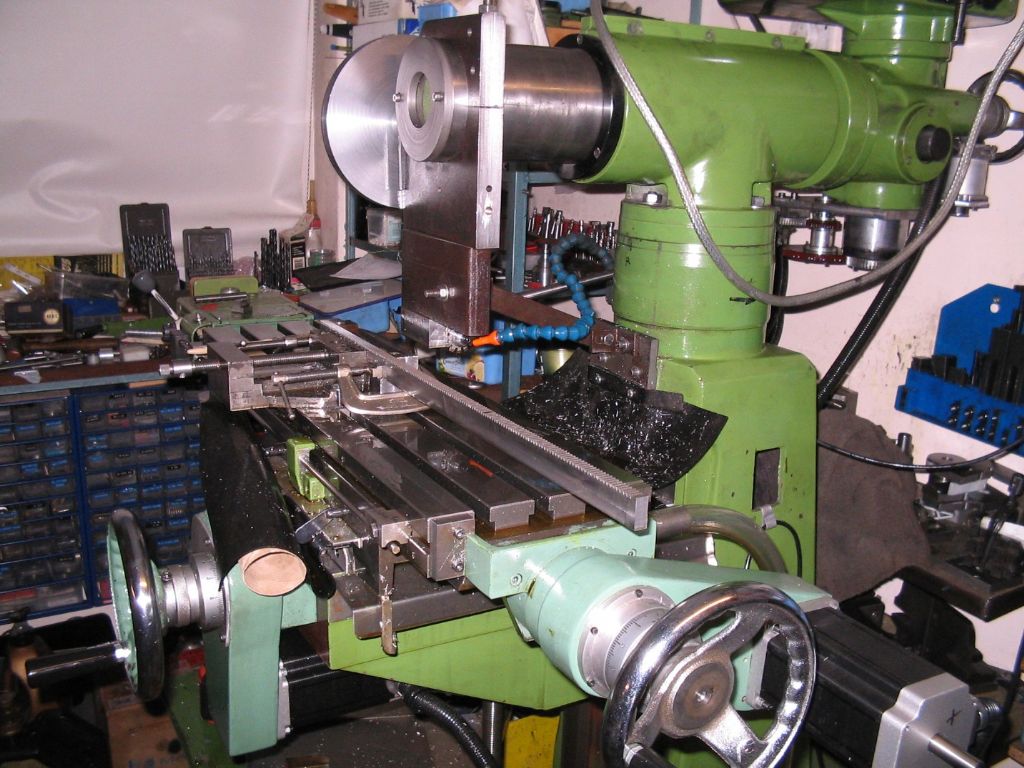Here's the background. Having bought a biggish mill (Amadeal VM32L) I find I really would like a power feed. I knew that, of course before buying it, but manufacturers power feeds are not cheap. In addition I would like to consider CNCing this machine at some point and thought a stepper motor would be a good approach.
Also as a software chap, I quite fancied the coding challenge – I've already built a CNC like system for my micromill.
Finally, I've been overspending my engineering budget recently so cost is a factor to avoid a swift blow from the good lady.
I'm struggling with the maths. I found various places where I could calculate the power of the motor I needed, but came away more confused than not.
The table is around 840×210 and I calculated the mass at around 60kg with a 20kg vice on it making 80kG.
The most useful site I found was this which had a calculator on it (a spreadsheet).
This reckoned I needed a 12Nm motor. Which is big and expensive and needs big power supply, drive and so on.
I'd been hoping that the PSUs and drives I already had (15A 24V PSU and 3.5A 6600) would do the trick.
I then started looking at DC motors. In particular cordless drill motors. I have one that I took apart eariler ( a drill), though the gearing is missing some cogs.
I found that I could make the table whizz along good and proper by attaching my 18V cordless drill to to the leadscrew. So enough power and controllers seem cheapish.
However, I was still confused about how much power I actually needed, so I build myself a poor man's dynamometer (if that's the right word.
This consists of a pulley on the X-Axis leadscrew, a bit of string and a luggage weigher.

the pulley radius is about 20mm.
I found I could move the table at milling speed with about 5kG force.
I then took a 50mm facemill and cut a 1mm deep channel in some mild steel. the first time round I'd set the cutting speed too low (450rpm) and it needed 7/8 kg Force. The second time at 800 rpm it only took 5/6kg again.
I think that's 50 Newtons at 2cm which is 1 N.m well shy of what the estimates worked out. Clearly a fast traverse would require more (I shall experiment).
There seems to be a wide range of views of what sort and power of motor is needed for this and I'm struggling to make sense of it.
What I would like is to use a 3./ 3.5 A stepper such as this claiming 3Nm, but I fear that it will struggle. Can you confirm my fears.
On the DC motor side, can I control the speed well enough? I would think so though I'm still left with power requirements. The motor from my (dismantled) drill claims to take 380A at stall speed according to a spec sheet I found, so power becomes a challenge. Specically it looks like I need 30 or 40 A at least at 18V.
I did think of running it off the original battery but with the charger on all the time. Thus the battery acting more like a capacitor.
I'm sorry for all this dribble, but any clarity you can provide would be most welcome!
Iain
Brian Rutherford.











